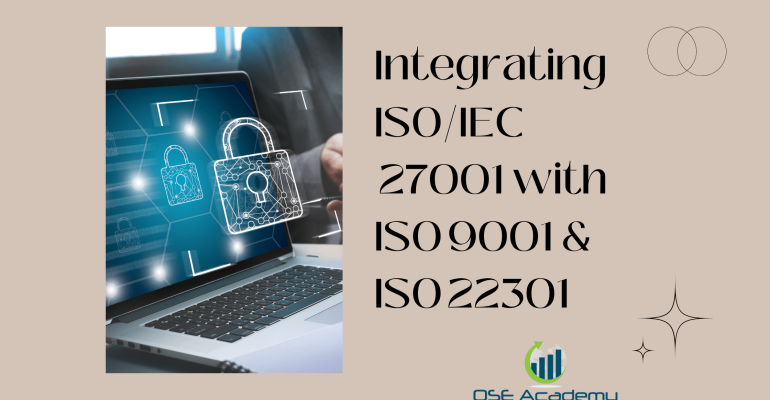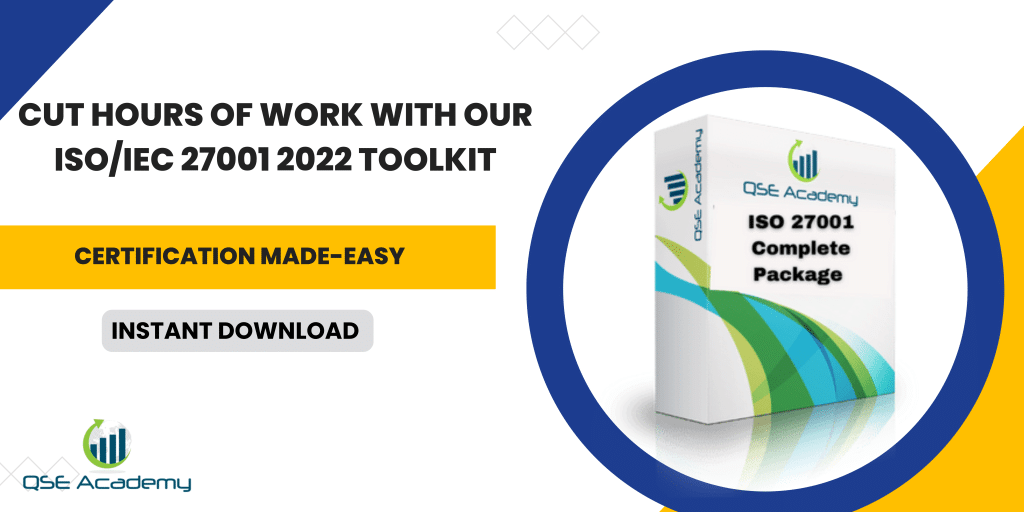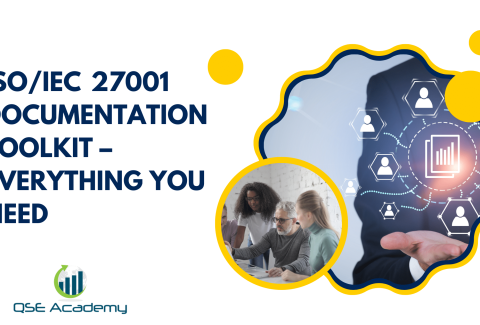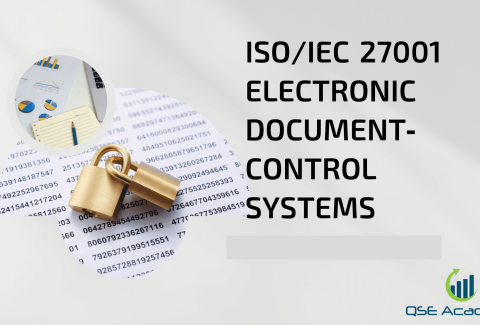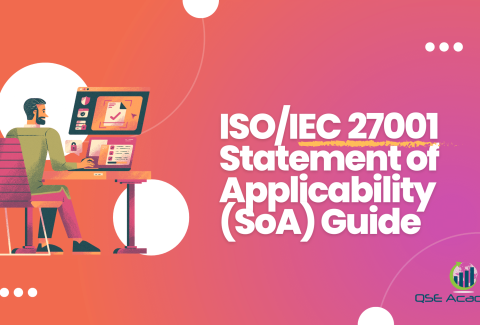Integrating ISO/IEC 27001 with ISO 9001 & ISO 22301
Last Updated on September 30, 2025 by Melissa Lazaro
Why Integrating ISO Standards Makes Sense
Imagine running three separate teams, each building their own playbook for the same game. One focuses on quality, another on information security, and a third on business continuity. Each team writes policies, organizes audits, and holds reviews—often covering the same ground, but in slightly different ways. The result? Duplicated effort, wasted time, and employees who roll their eyes every time another audit is announced.
That’s exactly what happens when ISO/IEC 27001, ISO 9001, and ISO 22301 are managed as stand-alone systems. They work, but they don’t work smart. The truth is, these standards were designed to fit together. Thanks to the shared Annex SL high-level structure, they already speak the same language—clauses on context, leadership, planning, support, performance, and improvement all line up.
Integration takes advantage of that structure. Instead of three parallel systems, you build one Integrated Management System (IMS) where:
-
Policies are unified.
-
Risk management flows across quality, security, and continuity.
-
Internal audits cover multiple standards in one go.
-
Management reviews evaluate performance holistically.
Pro Tip: Integration isn’t just about reducing paperwork—it creates synergy. When security, quality, and resilience are aligned, you spot risks faster and respond more effectively.
I worked with a manufacturing client who initially ran ISO 9001, 27001, and 22301 separately. Each standard had its own audits, documents, and meetings. Once we integrated them into a single framework, audit prep time dropped by 30%, and staff finally felt they were working with one system instead of three competing ones.
Bottom line: integrating ISO standards doesn’t just simplify compliance—it makes your management system stronger, leaner, and more valuable to the business.
Mapping ISO/IEC 27001, ISO 9001, and ISO 22301 Requirements
When you first look at these three standards side by side, it’s easy to feel overwhelmed. But once you realize they all follow the Annex SL high-level structure, the puzzle pieces start fitting together. Instead of three competing systems, you can map the clauses and see just how much they overlap.
Here’s a simplified mapping that shows where the standards align:
| Annex SL Clause / Requirement | ISO/IEC 27001 (InfoSec) | ISO 9001 (Quality) | ISO 22301 (Business Continuity) | Integration Opportunity |
|---|---|---|---|---|
| Clause 4 – Context | ISMS scope & interested parties | QMS scope & interested parties | BCMS scope & interested parties | One “context & scope” document |
| Clause 5 – Leadership | Security policy & roles | Quality policy & leadership | Continuity policy & roles | Unified policy + clear roles |
| Clause 6 – Planning | Risk assessment & SoA | Risk-based thinking | Business impact analysis & risk | One risk management framework |
| Clause 7 – Support | Awareness & competence | Training & competence | Awareness & training | Centralized training program |
| Clause 8 – Operation | Security controls (Annex A) | Product/service delivery | Continuity strategies & plans | Harmonized procedures & records |
| Clause 9 – Performance | Monitoring, internal audit, reviews | Monitoring, internal audit, reviews | Monitoring, internal audit, reviews | Single audit + management review |
| Clause 10 – Improvement | Nonconformities & CAPA | Nonconformities & CAPA | Nonconformities & CAPA | One CAPA system across IMS |
Pro Tip: Start your integration by aligning Clauses 4, 5, and 9—they’re nearly identical across all three standards and give you quick wins with minimal resistance.
I worked with a financial services provider who had three separate “management reviews”—one for ISO 9001, one for 27001, and one for 22301. After mapping the clauses, we consolidated them into a single management review meeting. Same agenda, same data—but one meeting instead of three. That change alone saved 20+ hours of leadership time every year.
Bottom line: once you see how the clauses line up, integration stops looking like a monster project and starts looking like simple process harmonization.
Building an Integrated Management System (IMS)
Once you’ve mapped the overlaps, the next step is to bring everything under one roof. This doesn’t mean throwing the three standards into a blender—it means designing a management system where shared processes serve multiple purposes.
Think of it this way: if ISO 9001, 27001, and 22301 are three different instruments, the IMS is the orchestra that makes them play in harmony.
Practical Steps to Build an IMS
-
Define a unified scope and policy that speaks to quality, information security, and business continuity.
-
Harmonize processes like risk management, audits, and management reviews.
-
Consolidate documentation—use one corrective action log, one training program, one communication plan.
-
Assign integrated ownership—each department contributes, but responsibilities are clear.
Example: Integrating Core Processes
| Process / Activity | Typical ISO 27001 Approach | Typical ISO 9001 Approach | Typical ISO 22301 Approach | Integrated IMS Approach |
|---|---|---|---|---|
| Risk Management | ISMS risk assessment + SoA | Risk-based thinking for QMS | Business impact analysis & risk | Single enterprise-wide risk register linking security, quality, and continuity risks |
| Internal Audit | ISMS-focused audit | QMS-focused audit | BCMS-focused audit | One integrated audit program covering all standards |
| Management Review | InfoSec performance review | Quality performance review | Continuity performance review | One management review meeting with combined agenda |
| Corrective Actions (CAPA) | Nonconformity log (security gaps) | Nonconformity log (quality issues) | Nonconformity log (continuity gaps) | One CAPA system with categories/tags per standard |
| Training & Awareness | Security awareness sessions | Quality training | Continuity/incident response drills | Unified training plan with role-based modules |
Pro Tip: Don’t try to integrate everything overnight. Start with processes that are already nearly identical—like internal audits and management reviews. Once the team sees the efficiency gains, it becomes easier to expand integration into more complex areas like risk management.
I worked with a telecom company that used to run three separate risk registers. When we built a single integrated risk framework, they immediately spotted overlapping risks—like supply chain disruption—that cut across quality, security, and continuity. By tackling them together, they not only reduced duplication but also created stronger controls.
Bottom line: an Integrated Management System isn’t about making life easier for auditors (though it does). It’s about creating one streamlined system that works better for your business.
Benefits of Integration for Organizations
When organizations decide to integrate their ISO standards, the benefits show up fast. Instead of juggling three parallel systems, they get one streamlined framework that saves time, money, and energy—while strengthening performance across the board.
Key Benefits of an Integrated Management System (IMS)
-
Reduced audit fatigue: fewer separate audits, less disruption to operations.
-
Cost savings: one set of processes, one set of documents, fewer duplicated resources.
-
Efficiency gains: shared risk management, training, and CAPA processes cut redundancy.
-
Stronger culture: employees see one system that combines quality, security, and resilience—rather than three competing ones.
-
Improved trust: clients, regulators, and partners gain confidence in an organization that manages risk, quality, and continuity together.
Side-by-Side Comparison: Separate vs. Integrated
| Area | Separate Systems (27001, 9001, 22301 run alone) | Integrated IMS (One system) |
|---|---|---|
| Audits | 3 different audit schedules | 1 combined audit covering all standards |
| Policies | Multiple overlapping policies | Unified policy framework |
| Risk Management | 3 separate risk registers | One enterprise-wide risk framework |
| Training | Department-specific, inconsistent | Unified training & awareness plan |
| Management Review | 3 separate leadership meetings | Single review with holistic insights |
| Efficiency | High duplication, siloed work | Streamlined, resource-saving approach |
Pro Tip: Always highlight the “people benefit” when selling integration internally. Employees appreciate fewer meetings, clearer responsibilities, and less duplicated paperwork. That’s often what gets buy-in.
One client in the financial sector reduced their certification costs by almost 25% after moving to an IMS. But what they valued more was the cultural shift—staff no longer dreaded audits, because they were leaner, more focused, and clearly connected to the company’s real goals.
Bottom line: integration isn’t just about efficiency—it’s about building a stronger, smarter management system that supports growth and resilience.
Challenges and How to Overcome Them
Integration makes a lot of sense on paper, but in practice, most organizations hit a few roadblocks. The good news? These challenges are predictable—and with the right approach, entirely manageable.
Common Challenges in ISO Integration
| Challenge | Why It Happens | Practical Solution |
|---|---|---|
| Department resistance | Teams feel protective of “their” standard (IT owns 27001, Ops own 9001, etc.). | Involve departments early, show them efficiency wins (e.g., fewer audits). |
| Overcomplicated documentation | Trying to force-fit three standards into one giant manual. | Keep documentation modular—shared where possible, specific where needed. |
| Unclear ownership | Everyone assumes someone else is responsible. | Define roles in a RACI chart and tie responsibilities to job descriptions. |
| Auditor expectations | Certification bodies may challenge integration scope. | Communicate early with your CB, share your IMS approach, and agree audit scope. |
| Change fatigue | Staff see integration as “more work.” | Highlight time saved (fewer audits, fewer meetings) and celebrate early wins. |
Pro Tip: Don’t integrate everything at once. Start small—combine management reviews or internal audits first. These quick wins build momentum and reduce resistance.
I worked with a logistics company where IT, Quality, and Risk were protective of their “territories.” Instead of forcing full integration, we began with one joint management review. Once leaders saw the value of a combined discussion—no repeated KPIs, no duplicate reports—they asked for more integration themselves.
Bottom line: challenges are real, but they’re not deal-breakers. With the right communication and phased approach, integration becomes less of a battle and more of a natural evolution.
FAQs About Integrating ISO/IEC 27001, ISO 9001 & ISO 22301
1. Can ISO/IEC 27001, ISO 9001, and ISO 22301 be audited together?
Yes. Certification bodies often encourage integrated audits when you have a properly structured IMS. Instead of three separate visits, auditors review the shared processes once—saving you time, cost, and disruption.
2. Will integration reduce certification costs?
In most cases, yes. Organizations typically save money by reducing duplicated documentation, minimizing audit days, and sharing resources. Many of my clients report 20–30% lower costs after moving to an integrated approach.
3. Do we need separate management representatives for each standard?
No. One management representative (or an IMS manager) can oversee the whole system, provided responsibilities are clearly defined. Some organizations keep a small team instead of a single person—but the key is clarity, not headcount.
Conclusion: Turning Three Standards Into One Strong System
Managing ISO/IEC 27001, ISO 9001, and ISO 22301 separately is possible—but it’s rarely efficient. Each standard adds value on its own, but when you integrate them, you unlock something bigger: a single management system that strengthens quality, protects information, and ensures resilience, all without duplicating effort.
In my experience, the companies that succeed with integration don’t just save time and money. They also build a stronger culture—employees stop seeing audits as a burden and start recognizing how quality, security, and continuity work together to protect the business.
Here are the key takeaways:
-
The Annex SL structure makes integration possible and practical.
-
Shared processes—risk management, audits, management reviews—are natural integration points.
-
The benefits go beyond compliance: fewer audits, lower costs, clearer roles, and stronger resilience.
-
Challenges are real, but with phased steps and clear ownership, they’re entirely manageable.
Next step: Download our ISO/IEC 27001 + ISO 9001 + ISO 22301 Integration Guide and start building a management system that’s leaner, smarter, and ready for the future.
Melissa Lavaro is a seasoned ISO consultant and an enthusiastic advocate for quality management standards. With a rich experience in conducting audits and providing consultancy services, Melissa specializes in helping organizations implement and adapt to ISO standards. Her passion for quality management is evident in her hands-on approach and deep understanding of the regulatory frameworks. Melissa’s expertise and energetic commitment make her a sought-after consultant, dedicated to elevating organizational compliance and performance through practical, insightful guidance.

